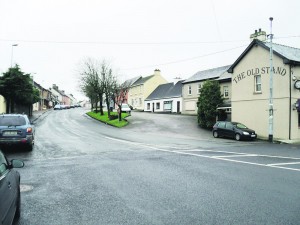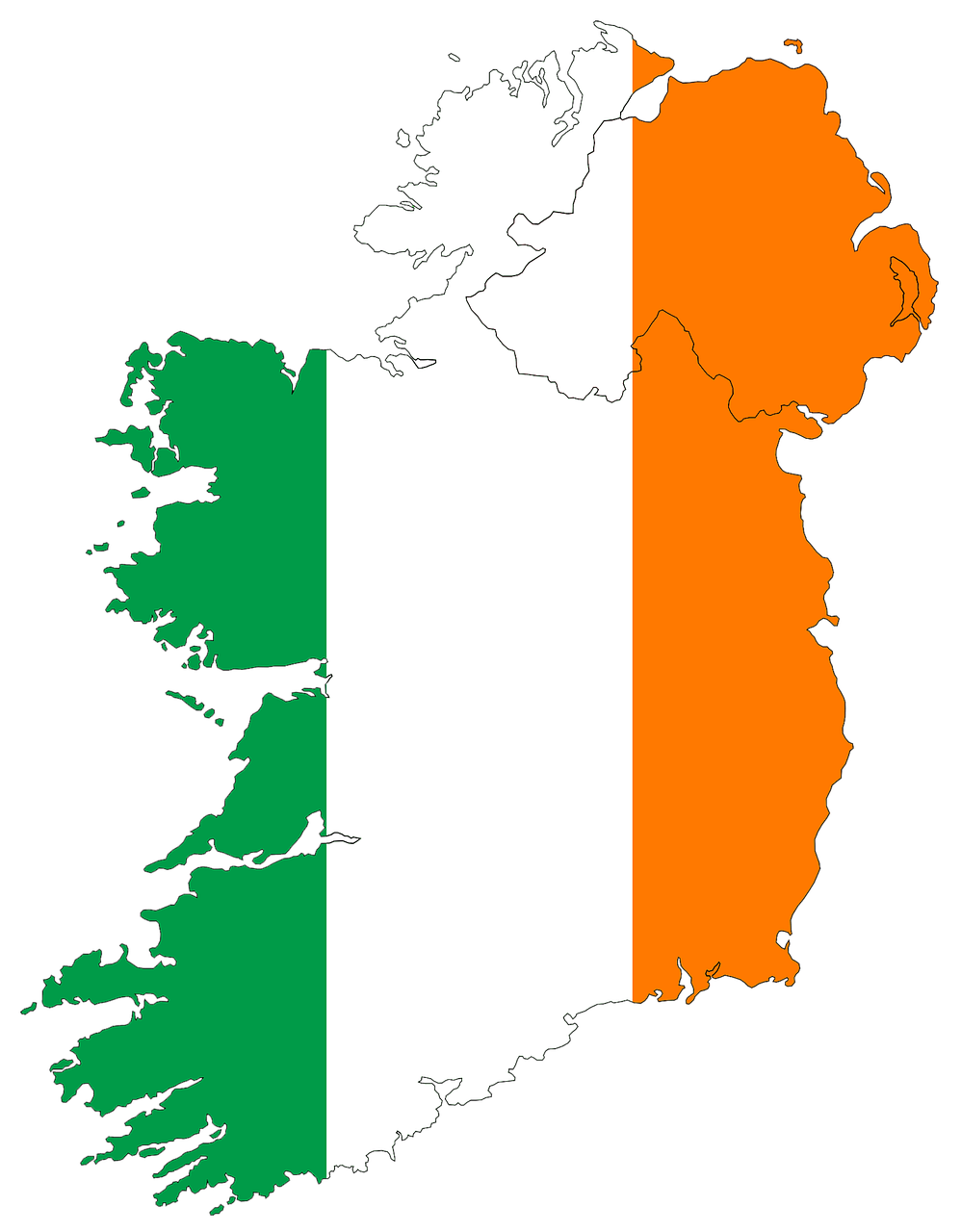
Shanagolden can lay claim to be one of the oldest urban settlements in county Limerick. The earliest mention of Shanagolden in the historical record is in 968, when Mahon, King of Munster and the increasingly powerful
Dál Cais defeated the Norse in a major battle at Shanagolden. While the source states that it was the Vikings of Limerick and Waterford that were defeated at Sengualainn, this could be interpreted to mean that there was a Viking settlement at Shanagolden. What is certain is that there was a settlement there in the pre-Norman period. In 1165, it is recorded that the armies of Connacht under Rory O’Connor invaded Limerick in an intervention to help the deposed Thomond king, Turlough O’Brien, regain his throne. During this incursion Shanagolden village and church were burnt.
The support of the Anglo-Norman family, the Desmond Fitzgeralds, who gained control of the lands of the Manor of Shanid around Shanagolden from 1237 was probably important in the sustaining of the village during the troubled early Norman period. In 1300 Shanagolden is recorded in a taxation record as a village and one of the smaller Anglo-Norman boroughs of County Limerick. By the mid-14th century burgage rents show that Shanagolden had 100 burgesses. This implies a population three and a half times greater than the number of burgesses, suggesting that Shanagolden village had a population of
circa 350 by 1336.
In 1612 Francis Trenchard was granted a patent to hold a Friday market and one annual fair at Shanagolden. This suggests that the village had survived the upheavals of the Desmond rebellions and the early years of the Munster Plantation in good shape.
Land boundaries can survive intact on the landscape for centuries. This is also suggested at Shanagolden. In the 1336 rental there were eleven chief tenants in the village, and some four hundred years later in the 1770 map of the Mount Trenchard estate there were eleven middlemen in the village. The use made of the land in the village in 1770 makes interesting reading. Some of the houses in the village were in poor condition with John Sheahan’s holding described as having ‘a bad cabin’. Also recorded was the mill and mill holding, George Hodges rented land that included houses, ‘chapple’ and garden, the chapel was the Catholic Mass house and Thomas Hodges’ holding had a ‘house, tan-yard and land’, suggesting that there must have been a good market locally for boots and shoes and other leather goods.
Shanagolden was part of the Rice/Spring Rice estate from 1803. The village became a post town before 1810 and a police barracks and bridewell were in place by 1821. This bridewell was situated on the main street, a little to the rear of Patie Joe’s public house. A new national school was built in 1842-3 near the fairgreen at the north of the village and this was affiliated with the National Board of Education in August 1843. This school and the National School established at Foynes three years earlier replaced the ten hedge schools that were recorded for the Catholic parish in the 1826 Irish Education Inquiry.
New Protestant and Catholic churches were built at opposite ends of the village in the early decades of the nineteenth century. At the north of the village the nave of the mediaeval church was reconstructed and a new roof put on and bell tower added in 1815 as the Church of Ireland parish church. The eighteenth- century Catholic Mass house was situated on the upper eastern side of the main street. At the south of the village a new Catholic church was built in 1814 and reconstructed in 1824.
During the economic recession of the pre-Famine years public works were widely used by the government to provide employment in many districts. The modern day road network was completed around the village during these years. The road from Ardagh to Shanagolden was opened in 1837 and the road from Shanagolden northwards towards the main Limerick to Tarbert road was completed in 1840.
By the mid-nineteenth century Shanagolden had reached the climax of its development. In the 1841 census the population of the village was 548 living in 94 houses: of these 35 (37%) were considered fourth-class one-roomed cabins. During the Famine years of 1845-49 the Catholic parish of Shanagolden lost one quarter of its population. On 22nd May 1847 a letter reported the dreadful conditions there;
“The poor people of the locality are actually starving. Thousands of people were living on seaweed and green cabbage, an ounce of meal couldn’t be got for love or money in the last five days.”
In 1886 Guy’s Directory stated that there was a butter market in the village every Tuesday. The commercial market for local farmers was to change five years later with the founding in 1890 of Shanagolden Co-Operative. A creamery was built on the site of the fairgreen. The creamery was to remain the central focus of daily life in the village for the following eighty years with butter and cream manufactured from milk supplied by the local farming community. In 1973 Shanagolden Co-Operative was purchased by Golden Vale Co-Operative Creameries Group, based in Charleville, Co. Cork.
Shanagolden village suffered population loss in every census for one hundred years from 1851. By 1911 the population had fallen to 271 and by 1951 it was 224. There was a small increase in population in the early 1970s but it was the advent of construction works for the building of the large Aughinish Alumina plant at Aughinish Island five kilometres north of Shanagolden from 1977 that resulted in large scale demographic changes. Between the censuses of 1979 and 1981, Shanagolden village increased in population from 249 to 352 (41.4%). Good local employment resulted in many young local people putting down roots and not emigrating as many would have in previous decades. In particular an influx of migrants from outside west Limerick who settled in the district after securing employment resulted in substantial population increases and the need for houses. Two new housing estates, the Rural Housing Organisation estate on the Mount David Road and a Limerick County Council estate on the demesne of the former Shanagolden House, were built on the northern side of Shanagolden village in the early 1980s. The village had increased in size for the first time in over a century.
The heyday of villages as commercial centres lasted from the late nineteenth century to the 1960s. Villages were primarily agrarian-service centres, tied to cow country and the needs of the dairy farmer. In 1886 there were nine publicans and eight grocers in Shanagolden village. By the 1960s there were twenty-three businesses in the village, including seven public houses and six grocery shops. Public houses in villages and towns were often grocery shops as well and in a prime corner site near the creamery the Cribbins’ family carved out a niche as grocer and publican. Many shops carried on more than one business. On the main street Nolan’s chemist, grocery and drapery drew a clientele from near and far. Some trades from by-gone days had hung on; Dan Joe Mulvihill was a harness maker and opposite the library Eamon Farrell was a corn crusher. Modernising influences from the 1960s began the process of a refocusing of commercialisation to larger urban centres.
Next time:
Adare.





